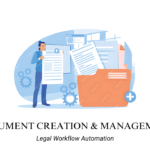Introduction
Meaning
Laws, compliance, and regulatory tracking is a functionality within legal tech tools that enables organizations to monitor and manage the various laws, regulations, and compliance requirements that apply to their operations. This functionality involves continuously tracking changes in legal and regulatory environments, assessing the applicability of new rules, and ensuring that all organizational practices remain compliant. It is essential for legal teams and compliance officers to stay up-to-date with evolving legal standards to mitigate risks and avoid penalties.
Purpose
The purpose of laws, compliance, and regulatory tracking is to provide legal and compliance teams with a systematic way to monitor and manage legal obligations across different jurisdictions and sectors. This functionality helps organizations stay informed about new and changing laws, assess their impact, and implement necessary changes to remain compliant. By leveraging this functionality, organizations can proactively address legal risks, maintain regulatory compliance, and ensure that they are operating within the bounds of applicable laws.
Benefits
- Proactive Compliance Management: Helps organizations stay ahead of regulatory changes by providing timely updates and alerts on new laws and regulations.
- Risk Mitigation: Reduces the risk of non-compliance and associated penalties by ensuring that all relevant legal requirements are tracked and addressed.
- Sector-Specific Compliance: Allows for tailored compliance management based on industry-specific regulations and standards, ensuring more accurate and relevant compliance efforts.
- Enhanced Organizational Governance: Supports comprehensive governance by ensuring that all legal and regulatory obligations are consistently monitored and managed.
- Improved Decision-Making: Provides legal and compliance teams with accurate and up-to-date information to make informed decisions regarding risk management and compliance strategies.
CHECK MORE: Guide to find best Legal Workflow Automation Tools for Lawyers
Features
Sectoral Differentiation
- Meaning: Sectoral differentiation is a feature that enables legal and compliance teams to customize compliance tracking based on specific industry sectors. This involves identifying the unique legal and regulatory requirements applicable to different sectors, such as healthcare, finance, manufacturing, or technology, and ensuring that compliance efforts are tailored accordingly.
- Purpose: The purpose of sectoral differentiation is to provide targeted compliance management by focusing on the specific regulations and standards that apply to a particular industry. This feature ensures that organizations are not only compliant with general laws but also with sector-specific regulations that may have unique requirements and complexities.
- Use Cases:
- Healthcare Compliance: A hospital’s compliance team uses sectoral differentiation to focus on healthcare-specific regulations, such as HIPAA in the United States, ensuring patient data privacy and security.
- Financial Services Regulation: A financial institution employs sectoral differentiation to manage compliance with banking and financial regulations, such as the Dodd-Frank Act or the General Data Protection Regulation (GDPR) in Europe, ensuring adherence to sector-specific legal standards.
Compliance Applicability
- Meaning: Compliance applicability is a feature that helps organizations determine which laws and regulations are relevant to their operations based on factors such as location, industry, and business activities. This feature provides a framework for assessing the applicability of various legal requirements and prioritizing compliance efforts accordingly.
- Purpose: The purpose of compliance applicability is to streamline compliance management by focusing on the specific legal and regulatory requirements that apply to an organization. By identifying relevant laws and regulations, this feature helps organizations allocate resources effectively and avoid unnecessary compliance efforts on inapplicable regulations.
- Use Cases:
- Multinational Compliance Assessment: A global corporation uses compliance applicability to identify the specific laws and regulations that apply to its operations in different countries, ensuring compliance with both local and international legal standards.
- Regulatory Impact Analysis: A company expanding into a new market uses compliance applicability to assess the regulatory landscape and determine which new compliance requirements will need to be met.
Law and Compliance Updates
- Meaning: Law and compliance updates is a feature that provides real-time alerts and notifications about changes in laws, regulations, and compliance standards that may impact an organization. This feature keeps legal and compliance teams informed of new legal developments, amendments to existing regulations, and upcoming compliance deadlines.
- Purpose: The purpose of law and compliance updates is to ensure that organizations remain current with the latest legal requirements and changes. By providing timely information, this feature helps organizations quickly adapt to new regulations, revise policies and procedures as needed, and avoid non-compliance risks.
- Use Cases:
- Regulatory Change Management: A compliance team in a multinational company uses law and compliance updates to monitor regulatory changes across various jurisdictions, ensuring that all necessary adjustments are made to maintain compliance.
- Policy Revision: A legal department leverages law and compliance updates to stay informed about new employment laws, ensuring that company policies are updated promptly to comply with the latest regulations.
Conclusion
These features within the laws, compliance, and regulatory tracking functionality are critical for effective compliance management and risk mitigation. By providing tools for sector-specific differentiation, assessing compliance applicability, and keeping teams updated on legal changes, organizations can proactively manage their legal obligations, reduce the risk of non-compliance, and ensure that they operate within the bounds of applicable laws and regulations.
CHECK OUT LEGAL WORKFLOW AUTOMATION TOOLS ON DIRECTORY OR CLICK HERE
